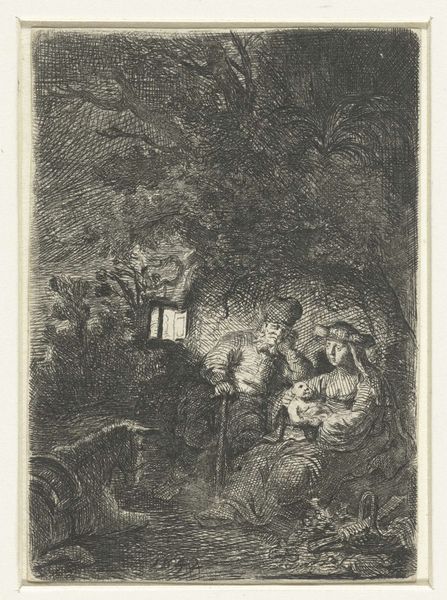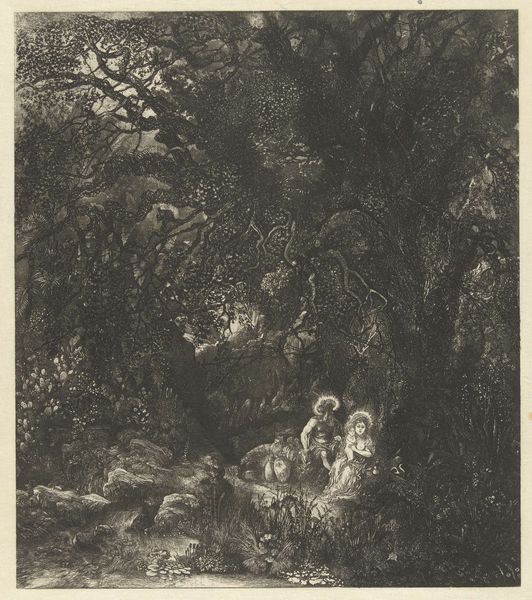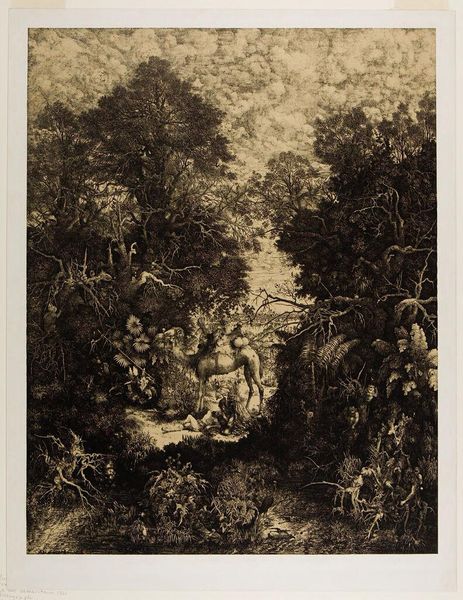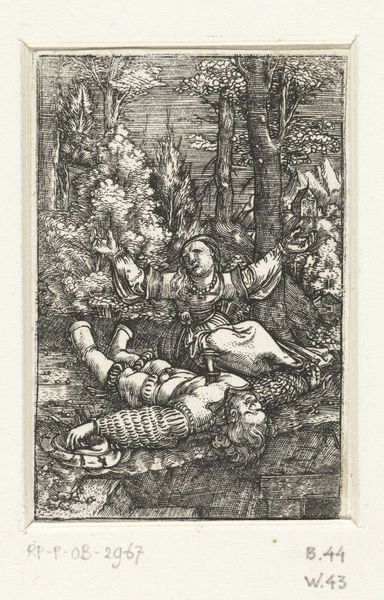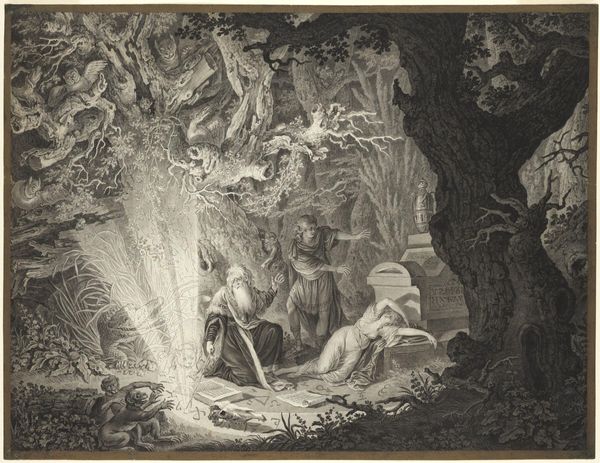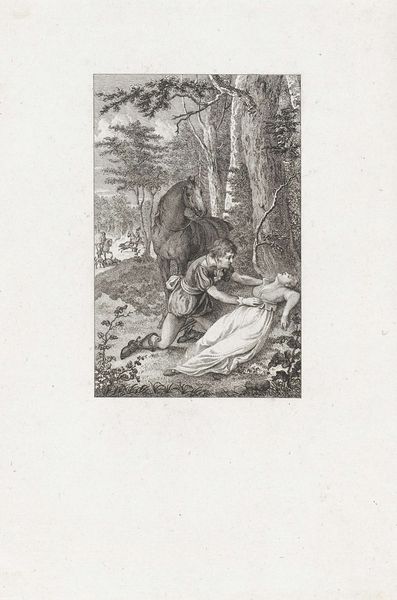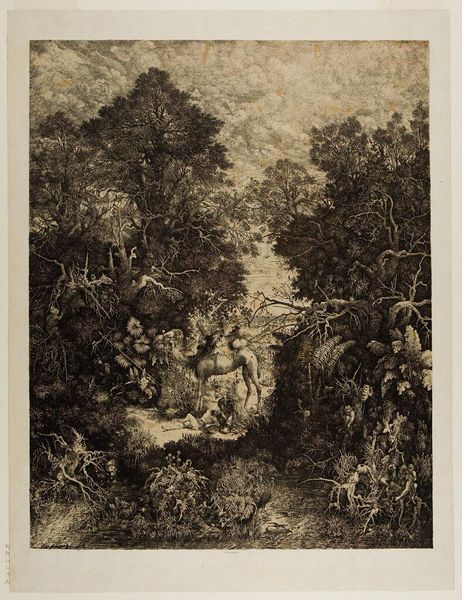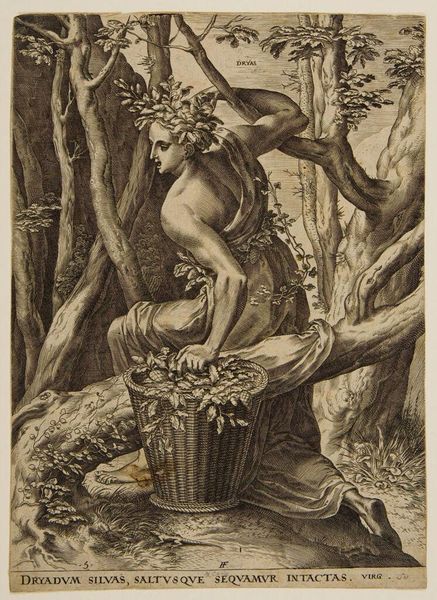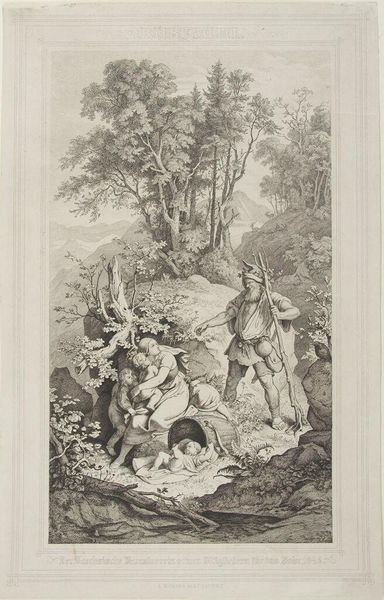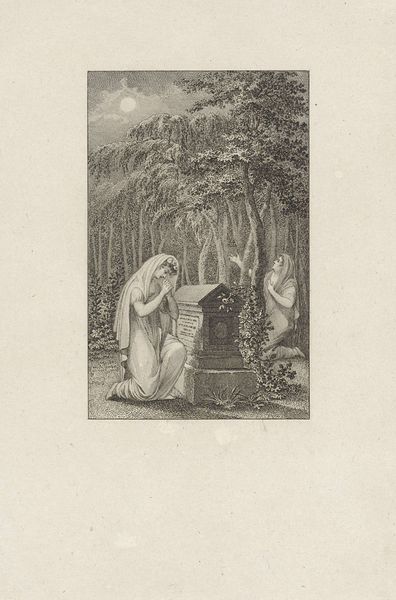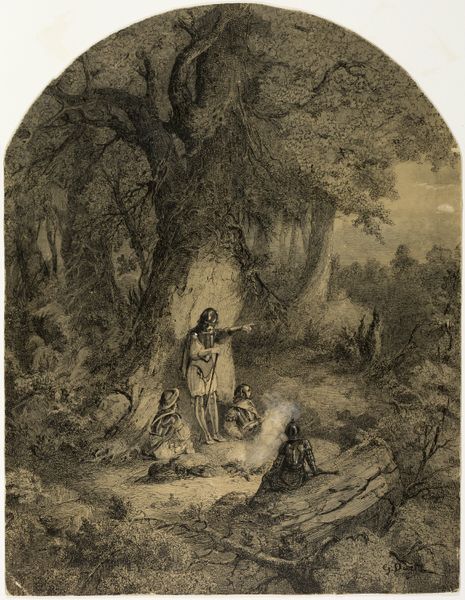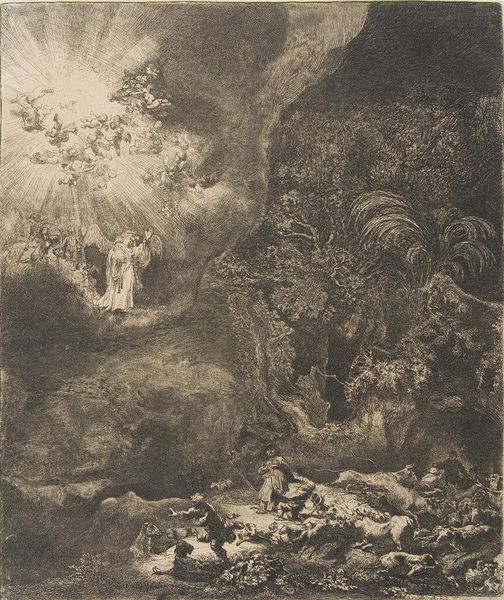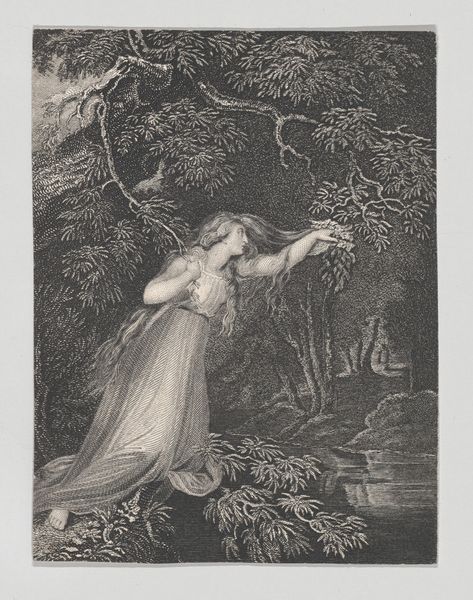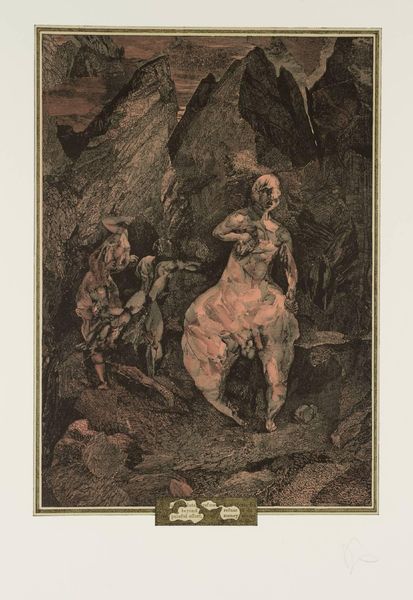
Copyright: CC0 1.0
Editor: This is Adrian Ludwig Richter's "Genoveva," created sometime in the 19th century. It's a print, depicting a woman and child in a forest. The scene feels very isolated and dreamlike. What do you see in this piece from a historical perspective? Curator: It's fascinating how Richter taps into the cultural fascination with medieval legends, specifically that of Genoveva of Brabant, popular in 19th-century Europe. The print suggests the romanticized view of the past and female virtue, portraying her exile as a test of faith. How does the imagery support these cultural values? Editor: The forest seems to swallow them up, yet there's a sense of peace, perhaps hinting at divine protection. It’s interesting how a print could convey such emotional complexity and speak to cultural ideals of the time. Curator: Exactly! Prints like this were widely circulated, shaping public perception and reinforcing societal norms. It makes you wonder about the power of images in constructing historical narratives. Editor: I hadn't considered the print's role in shaping the narrative itself, rather than just depicting it. Thank you.
Comments
No comments
Be the first to comment and join the conversation on the ultimate creative platform.
